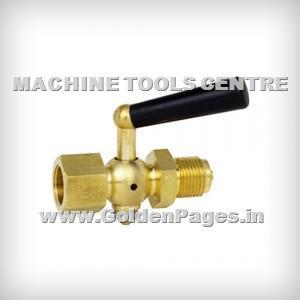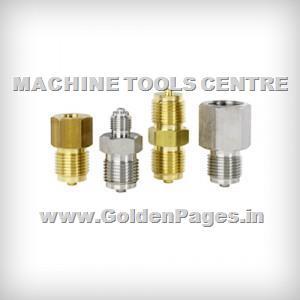
2 Way And 3 Way Gauge Cock
Product Description
Applications
- Shut-off device for pressure measuring instruments, for measurement of liquids, gases and vapours
Special Features
- Version per DIN 16261, DIN 16262 and DIN 16263
- Nominal pressures to 25 bar
- Operating temperature up to 50 °C
Description
Stopcocks provide the opportunity to either vent the connected pressure gauge according to the position of the handle (venting position), i.e. put it into a pressure-free state, or to vent the pressure measuring instrument under pressure (operating position) or to let the pressure medium escape (blow position). For pressures higher than those in the data sheet, shut-off valves must be used. Test connection version.
Stopcocks with test connection are intended for the simultaneous connection of operating pressure measuring instruments and test connection pressure gauges to the pressure pipeline. With this version, the third route, which leads to the outside at the standard version, is used asconnection for a test connection pressure gauge. A fourth position of the handle enables the simultaneous connection of the operating and the test connection pressure measuring instruments to the pressure pipeline.
Product Description
Applications
- Shut-off device for pressure measuring instruments, for measurement of liquids, gases and vapours
Special Features
- Version per DIN 16261, DIN 16262 and DIN 16263
- Nominal pressures to 25 bar
- Operating temperature up to 50 °C
Description
Stopcocks provide the opportunity to either vent the connected pressure gauge according to the position of the handle (venting position), i.e. put it into a pressure-free state, or to vent the pressure measuring instrument under pressure (operating position) or to let the pressure medium escape (blow position). For pressures higher than those in the data sheet, shut-off valves must be used. Test connection version.
Stopcocks with test connection are intended for the simultaneous connection of operating pressure measuring instruments and test connection pressure gauges to the pressure pipeline. With this version, the third route, which leads to the outside at the standard version, is used asconnection for a test connection pressure gauge. A fourth position of the handle enables the simultaneous connection of the operating and the test connection pressure measuring instruments to the pressure pipeline.





